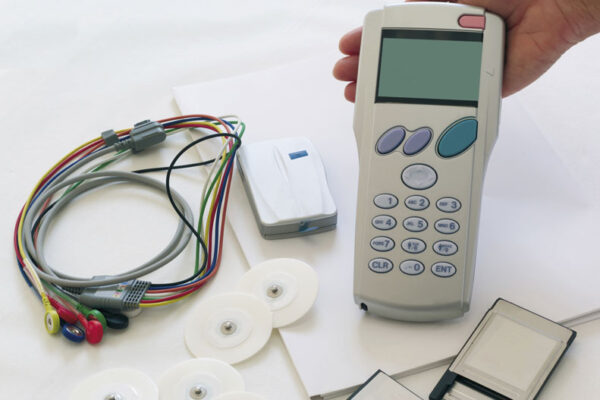Sometimes your doctor will ask for you to wear a 24 hour heart monitor. This is nothing to worry about and is completely painless. This will then give the doctor in charge of you better information on your heart performance over a 24 hour period and help them see if the medicines you are currently on are working correctly. It will also show the doctor in charge whether they need to perform any further tests, procedures or simply change your medication.
A Holter monitor is a battery-operated portable device that measures and records your heart’s activity continuously for 24 to 48 hours or longer depending on the type of monitoring used. The device is the size of a small camera. It has wires with silver dollar-sized electrodes that attach to your skin. The Holter monitor and other devices that record your ECG as you go about your daily activities are called ambulatory electrocardiograms.
Why do people wear Holter monitors?
Regular electrocardiograms (ECGs or EKGs) let your doctor look at your heart’s activity at one point in time during your ECG test. But abnormal heart rhythms and cardiac symptoms may come and go. That’s why your doctor may want to evaluate your heartbeat over time while you go about your normal activities. You may be asked to wear a Holter monitor if you have fast, slow or irregular heartbeats called arrhythmias.
Wearing the monitor may tell your doctor:
- If your medicines are working.
- Why you have symptoms such as dizziness,faintnessor the feeling that your heart is racing or skipping a beat.
- If your heart is getting enough oxygen to meet its needs.
What are the risks of Holter monitors?
Wearing a Holter monitor has no risks and causes no pain. Holter monitors have wires that connect to small discs (electrodes) attached to your chest to record the electrocardiogram. Because the electrodes are attached with tape or adhesives, they may cause mild skin irritation. Tell the technician if you are allergic to any tapes or adhesives.
What should I expect with the Holter monitor?
A specially trained technician will attach the Holter monitor and instruct you how to record your symptoms while wearing it.
- The technician first attaches the electrodes to your chest. If you have a hairy chest, he or she may shave some hair off to attach the electrodes firmly.
- Once the electrodes are in place, the technician helps you put the Holter monitor on and explains how to take care of it.
- You can carry the monitor in a pocket or pouch, slung across your shoulders and neck like a purse or camera, or attach it to your waist.
- Do your usual activities while you wear the monitor with these exceptions:
-Don’t bathe, shower or swim while wearing the monitor.
-Don’t have X-rays while wearing the monitor.
-Stay away from high-voltage areas, metal detectors or large magnets.
The technician will show you how to keep a diary of your activities and symptoms during the test. It’s important to keep an accurate diary. If you feel symptoms such as chest pain, shortness of breath, uneven heartbeats or dizziness, note in your diary the time of day they began and what you were doing. Your diary will be compared to the changes in your ECG recorded by the Holter monitor.
What happens after wearing a Holter monitor?
After the test period, return the monitor to the technician. He or she will process the record of your heart activity and prepare a report for your doctor. This will include the notes in your diary. You should get the results of the test in one or two weeks.
Source- Heart.org


Pingback: Fitness and Heart Rate Monitors – www.rememberyourbody.com